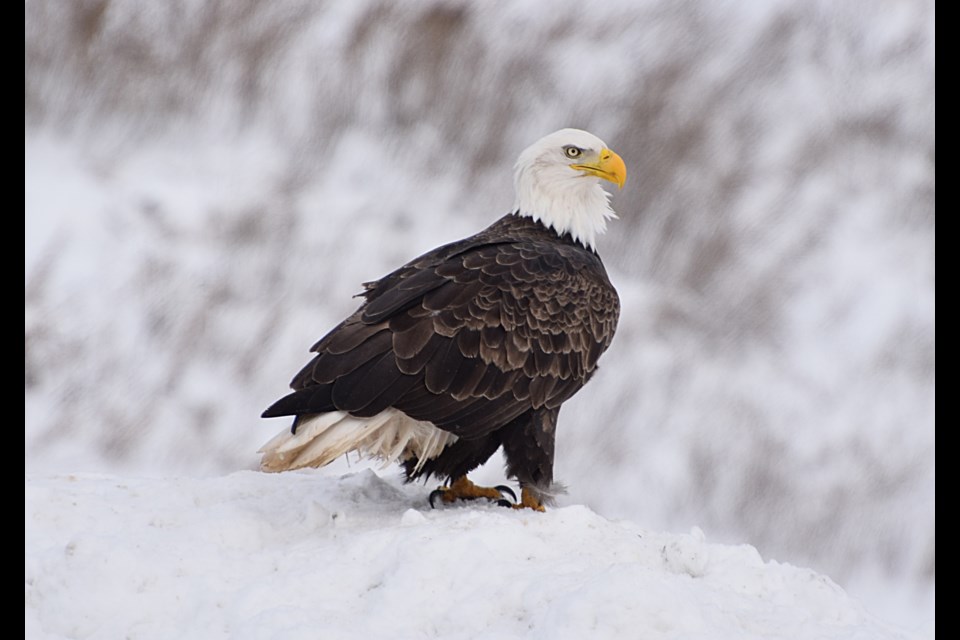A Barred Owl in East Ferris and two Wild Turkeys in Callander are among the 38 species recorded in the annual North Bay Christmas Bird Count held Saturday.
It was the first time Wild Turkeys were recorded locally in the Audubon count, which has been taking place for 120 years in North America and five decades here. Wild Turkeys have been establishing in the area for more than a decade but just not seen by birders or feeder monitors during the count.
“The count is amazingly consistent, covering in every region (of North America) the same 15-mile (24-kilometre) diameter circle,” said long-time birder Dick Tafel, noting the centre of the circle for North Bay’s count is Dugas Bay on Trout Lake.
It’s the longest-running “citizen science” project on the continent with about 2,000 locations with consistent data compiled. Locally, it’s organized by the Nipissing Naturalists Club.
Tafel said “every effort is made to ensure no duplications are involved via feeder-watchers and variously spread-out field observers.”
More than 50 people recorded a total of 2,200 birds this year. Last year there were 33 species spotted among 2,018 birds.
Also a first for this area, a Peregrine Falcon was recorded during the count even though the hunter of pigeons and other small animals has been around North Bay for several years.
Lori Anderson, the official compiler for the North Bay count, said there always a few surprises and “things you see that make you wonder” why a species is seen or not.
“Bald Eagles totalled 17, which is an average number for the last five years,” Anderson said. “But this species was very rare in earlier years and was not seen at all on 23 of 42 counts North Bay has completed.”
Tafel noted that most of them were seen at the East Ferris landfill on Bertha Road in Corbeil, although one was recorded on a Lake Nipissing beach.
“There’s always a species we feel, that with the amount of effort (participants spread out), we feel we should see them,” Anderson said, adding they “didn’t see anything really concerning” this year.
Anderson said they saw Buntings more often in the past.
Missed and poorly represented species, Anderson said, included no gulls (due to too much ice on lakes), few waterfowl, no hawks and zero Kinglets, Waxwings, Snow Bunting, Purple Finch, Pine Siskin and only six American Goldfinch .
A couple feeder observers, however, did get a stark reminder of the circle of life.
Anderson said one participant has had a Red-winged Blackbird show up since the fall, likely sticking around due to an injury, and it did get recorded Saturday. But they also witnessed a Northern Shrike swooping in and taking the blackbird for a meal.
Another observer was treated to the same reality while watching a Song Sparrow at their feeder.
“A Shrike took it too,” she said.
Common sightings include five different kinds of woodpeckers, four ducks in the still-open waters of Trout Lake, two of the newly-named Canada Jays (formerly Whiskey Jays) and more than 650 Black-Capped Chickadees, this year’s most common bird. There were also 74 Pine and 62 Evening Grosbeaks and numerous Redpolls.
Speciality birds observed include one Ring-necked Duck and Common Goldeneyes, one Red-bellied Woodpecker, one Northern Flicker and one Gray Catbird. Wintering near feeders were also one Dark-eyed Junco, a White-crowned Sparrow.
Dave Dale is a Local Journalism Reporter with BayToday.ca. LJI is funded by the Government of Canada.



